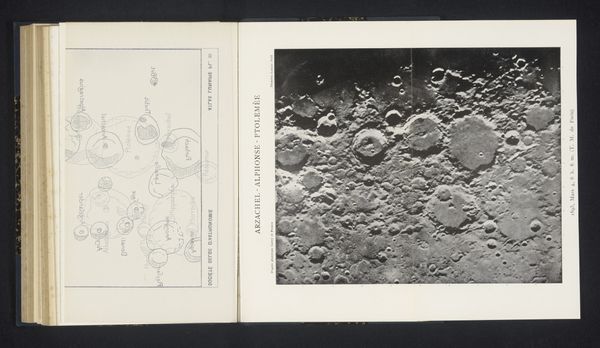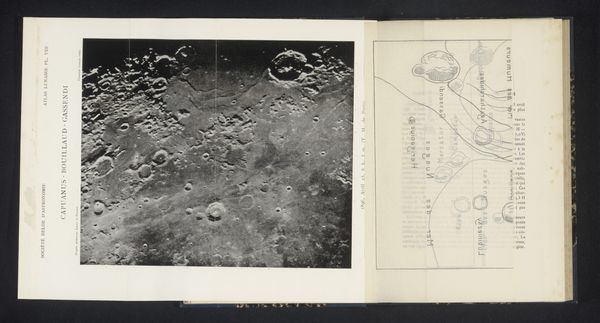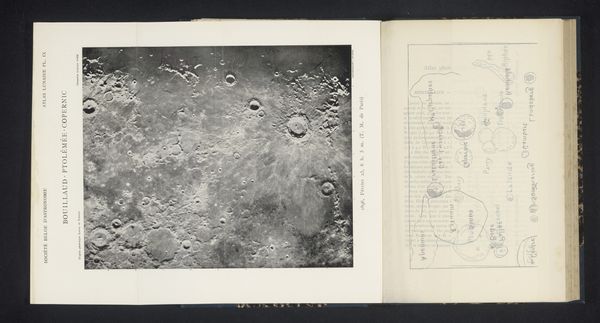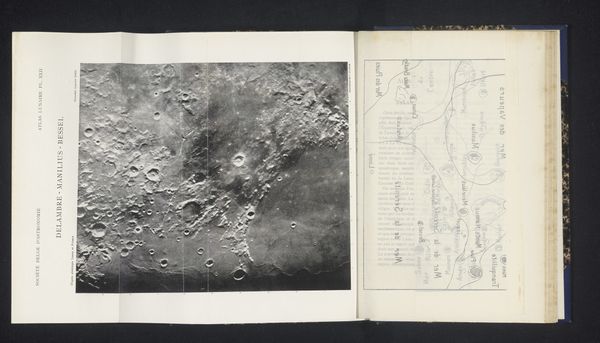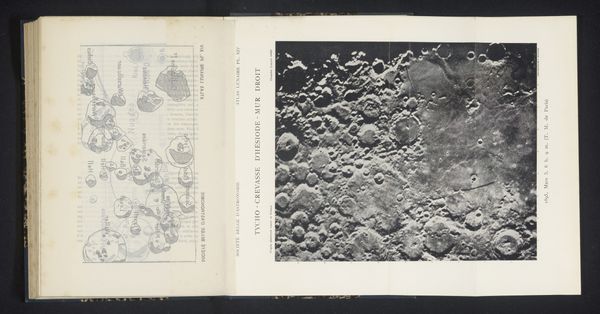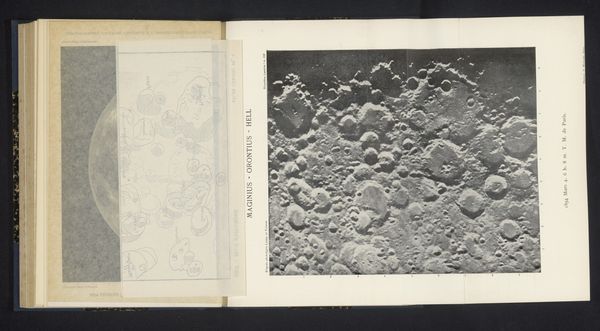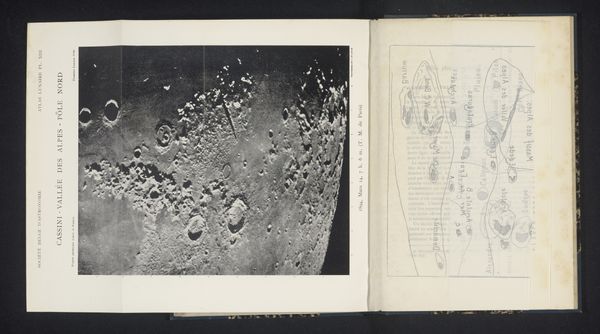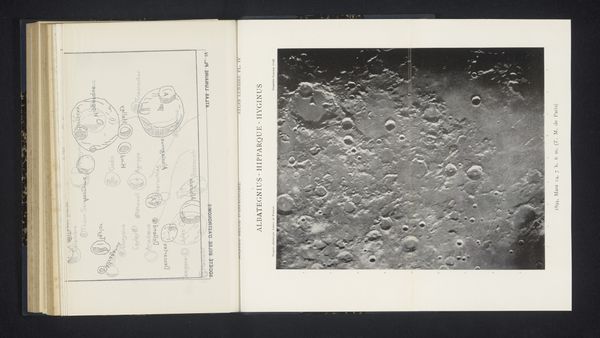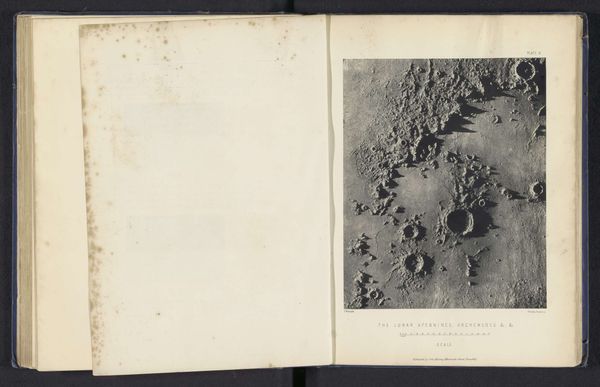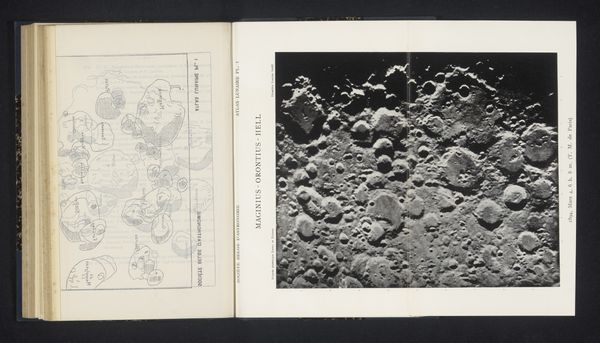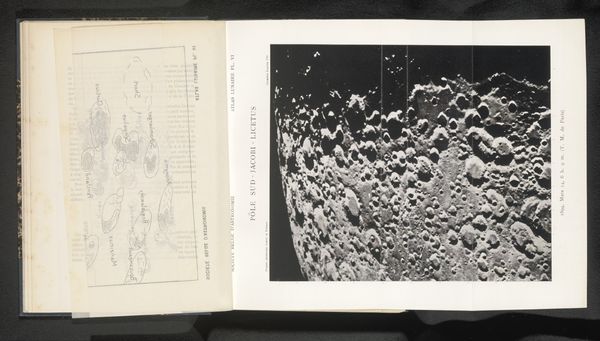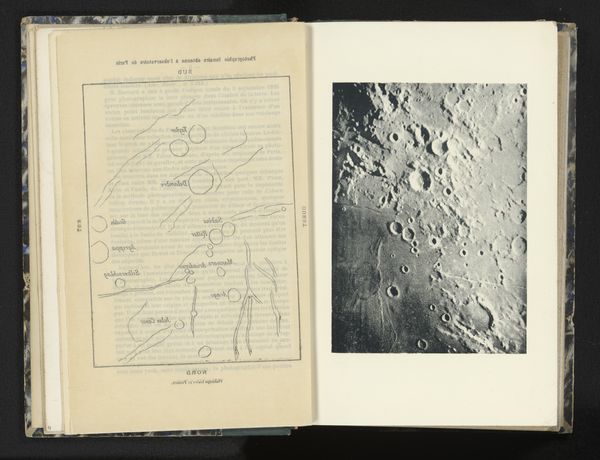
drawing, print, photography, ink
#
drawing
# print
#
landscape
#
photography
#
ink
#
geometric
#
academic-art
Dimensions: height 231 mm, width 195 mm
Copyright: Rijks Museum: Open Domain
This illustration by Loewy and Puiseux presents a photographic image of the moon's surface, alongside a corresponding map. Here, the stark craters, standing as dominant visual symbols, evoke a sense of cosmic violence and silent witness to the universe's relentless forces. The lunar surface, marked by these cavities, speaks to us of celestial dramas played out over eons. These very forms—circular, deep, and seemingly bottomless—echo motifs found in terrestrial art across cultures. Think of the oculus in ancient Roman architecture, or even the all-seeing eye in religious iconography. The crater, in its raw, geological form, taps into a deep-seated human fascination with voids and origins. It mirrors our psychological exploration of the unknown, the subconscious, and the profound mysteries of existence. Consider how this symbol—the crater—has been employed in various epochs. Once a mere geographical feature, it resurfaces, transformed and laden with new cultural weight, constantly evolving.
Comments
No comments
Be the first to comment and join the conversation on the ultimate creative platform.
